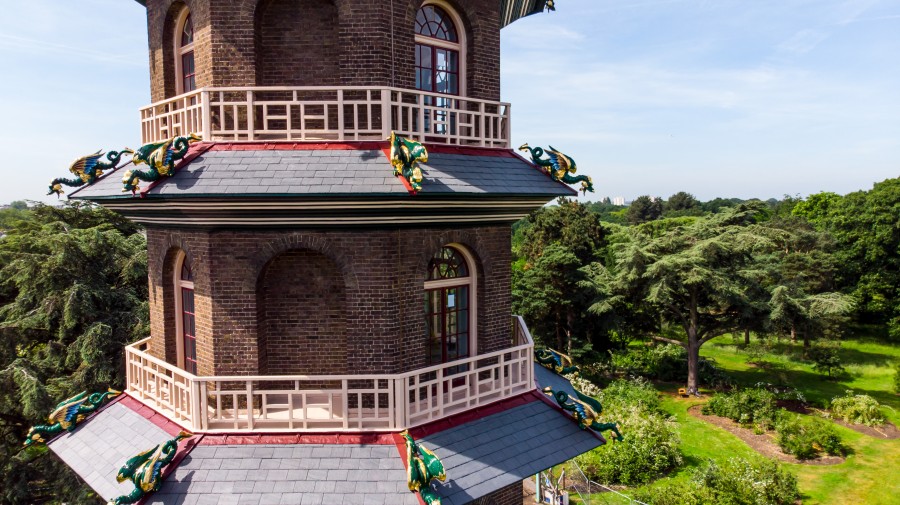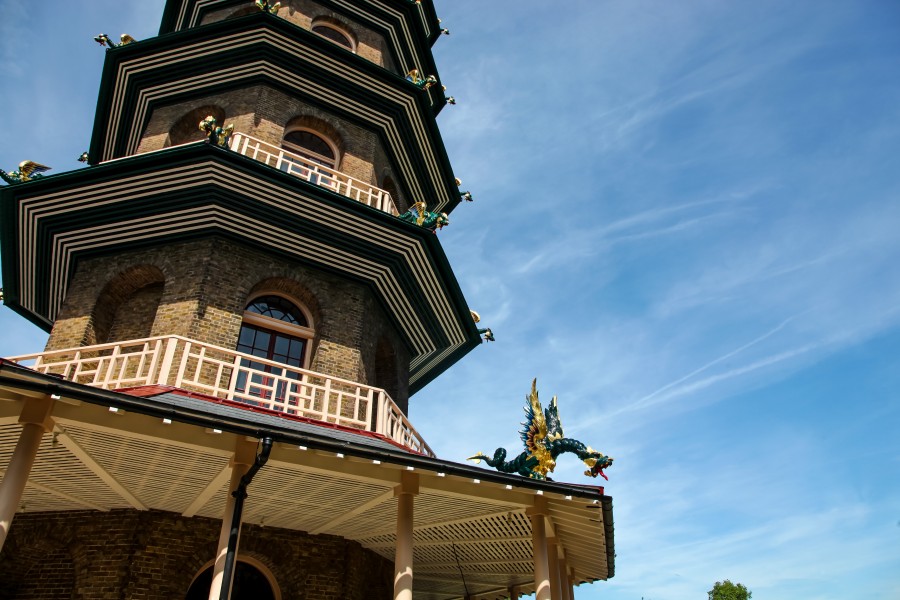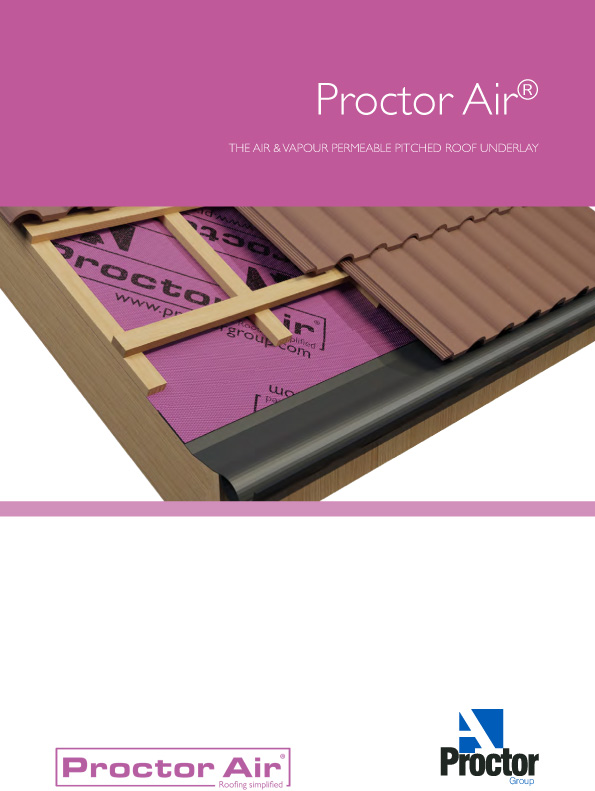Welsh Slate roofing slates have played a "critical" role in the award-winning renovation of one of London's most unusual buildings.
A two-year conservation project to restore the roofs, and 80 decorative dragons, on the 18th Century Great Pagoda in the World Heritage Site of the Royal Botanic Gardens at Kew will give the public access to the upper floors for the first time in decades.
The 10-storey building was one of the jewels in the crown of Georgian London, one so unusual that a suspicious public were unconvinced it would remain standing when it was built in 1762.
The brightly coloured dragons had been absent for more than 200 years after they were removed in 1784 when slate
and copper work replaced earlier experimental cast iron tiles on the
building's roofs under the direction of the original architect Sir
William Chambers. It was rumoured
they were removed to be sold to settle George IV's gambling debts but
experts believe they had simply rotted over time.

The roofs on nine of the storeys (each one of which was unique) of the Grade 1 listed building were then laid with Cornish slate and sheet copper cappings on the hips, while the top cupola roof was entirely covered with sheet copper.
While the roofs have now been re-laid with Welsh Slate's
Cwt-y-Bugail slates (600mm x 300mm on the ground floor and 500mm x
300mm on the upper floors), 72 of the old wooden dragons have been
replaced with 3D printed nylon replicas (the other eight were
hand-carved in wood) fixed to stainless steel brackets for extra weather
security.
The cost of the
conservation work - £5 million - was paid for by the charity Historic
Royal Palaces whose objective was to return the building as closely as
possible to its original appearance using newly-discovered historic
documents and archaeological analysis.
That
aim guided many of the decisions made, from the use of traditional
materials to the setting out of the dragons and the final colour scheme,
under the expert guidance of conservation architects and frequent Welsh Slate specifiers Austin Smith Lord.
Director and conservation-accredited David Millar said: "For the replacement slates, we tried hard to use the same Cornish slate.
The original quarry was closed and the nearest existing quarry had
already committed to using its entire annual output to a local housing
development. We tried another Cornish slate but the thickness and quality was different to the original slate. We eventually chose Cwt-y-Bugail slate which is a close petrological match and has the same consistency as the original slates.
"The Welsh Slate
was critical to the aesthetic appeal of the roof areas against the 1762
paint colours but as well as being excellent aesthetically it also
meets the performance requirements."

The Welsh
slates were laid with copper nails to the original close boarding on
pitches ranging from 20° to 45° for main contractor Blue Sky Building by
sub-contractor Richardson Roofing who are specialists in heritage
roofing and who won a 2019 Roofing Award for the project. Slates to the
hip abutments were hand cut and at ground floor, the roof sweeps upwards
which was achieved by curving the sarking boards below the slates, all
this through an extreme winter.
Directly
above the slated roof on each level is a flat copper roof which can be
accessed through glazed doors on each floor. These roofs acted as
viewing balconies and were surrounded by wooden balustrades.
As part of the restoration, Richardson Roofing was contracted to strip off and renew all slate
and sheet copper weatherings but during the erection of scaffold and as
closer inspection became possible, Historic Royal Palaces, along with
Historic England, became more interested in retaining a proportion of
the copper sheet weatherings. While there were signs of wear, the copper
to the flat roofs and cupola were not deemed to be in need of immediate
repair and were retained.
Prior
to the work being started, Richardson Roofing and Austin Smith Lord
designed a mock-up of a typical hip section upon which the dragons would
be located. A full-size mock-up was built at Hampton Court Palace and
various copper and slate details were tried.
Then, as the start of work neared, the mock-up was relocated to Kew
Gardens where a temporary roof was erected to enable further changes and
experimentation.
An
architectural requirement for the dragons was that they should appear to
be standing on the roof coverings and as such the brackets had to be
low enough for this to happen. To achieve the low profile, each bracket
was sunk inside the dragon with copper sheet sleeves soldered to each
hip capping. The hip cappings in turn were welded into sheet copper
soakers located between each course of slates.
Conor
Richardson, business development consultant for Richardson Roofing,
said: "While the restoration was headed up by the architect, many other
parties including Historic Royal Palaces, Historic England and Kew
Gardens themselves, not to mention Richmond Upon Thames building
department and the main contractor, each had an input into how the works
proceeded.
"Dealing with
so many different authorities raised challenges we had not previously
encountered but after agreeing to work longer hours and employing
additional hard metal and slating labour the project was completed on
time."

Because of the high
level of interest in the project, Historic Royal Palaces also approached
Richardson Roofing to help run a building conservation masterclass as
part of the charity's partnership with SPAB (the Society for the
Protection of Ancient Buildings).
With help from Welsh Slate,
Richardson Roofing delivered an enthusiastically-received slating
masterclass attended by architects from all over the country. Some even
got hands-on with the slate cutting demonstration!
The
Great Pagoda was designed for the royal family by Chambers who was
inspired by the buildings he saw when working in Canton and his designs
for the Kew monolith were influenced by prints he had seen of the famous
porcelain pagoda at Nanjing.
Built
in the Chinoiserie style, Londoners and tourists alike flocked to see
the striking 50m tall structure which formed part of a homage to the
Grand Tour in the royal garden.
Although
it had suffered much in the centuries since - losing original colour,
materials and meaning - it remained the supreme example of Chinese style
in Europe. Now, after years of investigation and research, the building
has been repaired, conserved and returned to its former glory.
It was formally opened by HRH The Prince of Wales in July 2018.
To watch a video of the project, please go to https://www.richardson-roofing.com/portfolio/kew-pagoda-2/






















